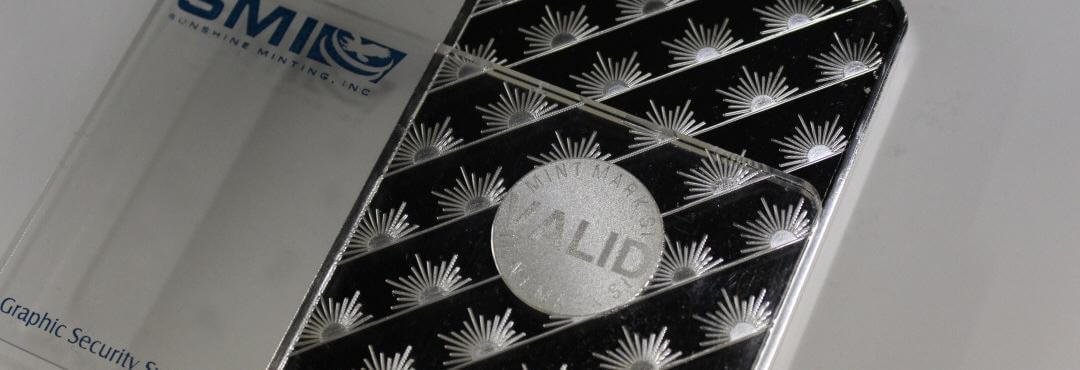Simple Home Tests to Determine Whether Your Bullion Is Real or Fake
Just about all bullion buyers worry about counterfeits. Those concerns are magnified when someone is buying for the first time. Stories about fake coins from China and gold bars drilled and filled with tungsten have been in the headlines recently. But the truth is, counterfeiting is just about as old as the concept of money itself.
Before diving into all the ways that fakes can be detected, the first and best protection is to work with a reputable and knowledgeable dealer such as MY Bullion Trade. Established in 2010, MY Bullion Trade has strict quality control and internal screening standards, plus it stands behind the metals that it sells to customers.
Fortunately, making phony coins or bars isn’t easy. The equipment involved is significant – it takes far more than a color printer and the right paper. And making fakes good enough to pass a few simple tests is darn near impossible.
Some testing equipment, such as mass spectrometers and sonogram machines, are expensive and impractical for the typical person to use. However, here are some lower budget ways you can determine whether or not the bullion you hold is genuine:
Size and Weight
Gold and silver are extraordinarily dense metals – much denser than just about any base metal, including lead. That means just about all fakes that weigh correctly will be too large in diameter and/or thickness. Or they will be underweight in order to achieve the right diameter and thickness. Simply comparing the diameter and thickness of the coin in question with others known to be genuine could be enough to put you at ease.
If not, an inexpensive set of calipers and a digital scale are a good way of checking. Every coin or round is produced with close tolerances in terms of diameter, thickness, and weight. You can find these dimensions on the official website of the minters or on Wikipedia.
Sound or “Ping” Testing
Authentic gold and silver coins chime when struck and the difference is notable versus base metals.
Base metal coins will sound duller and their ring will be shorter — much like the difference between clinking crystal versus glass champagne flutes.
Try balancing the coin on your fingertip and strike it with another coin. This video provides a good demonstration.
Magnetism
The above video on ping testing also references another simple technique for using a magnet to identify fakes. Gold and silver are non-magnetic. Placing a strong magnet on a coin and tipping it to watch whether the magnet slides off, as it should, or sticks, as it would to a counterfeit, requires only an inexpensive magnet and a few seconds. (Note that some base metals used in counterfeiting are also non-magnetic, so we suggest doing this in conjunction with some other techniques listed.)
Thermal Conductivity Testing for Silver
Silver is one of the best conductors of thermal energy found in nature. That makes it easy to test silver bullion using nothing more than an ice cube. Place an ice cube on top of a coin, round, or bar, and you should see it begin melting almost instantly as heat is quickly transferred. Holding a coin or round between fingers or in the palm of your hand makes the results even more noticeable as the silver rapidly cools to your touch.
A Word about Tungsten Fakes
Some of the hardest to detect counterfeit gold products involve tungsten. Tungsten’s density is close to that of gold, and it is relatively inexpensive. Here are some of the best ways to avoid problems:
Avoid large gold bars. 10-ounce and larger gold bars are among the easiest to tamper with as they can be drilled, filled with tungsten, and then plugged again with gold. This is more difficult with units 1 oz and smaller. Tungsten is extraordinarily hard whereas gold is soft. This means tungsten is very difficult to use in minting or fabricating small items. It is brittle, and stamping it with a design will result in coins with less detail unless it has been plated with a thick layer of gold.
Ring testing as outlined above should still offer defense against tungsten fakes.
If the deal is too good to be true, it probably is. Never buy gold bullion below its melt value unless you know and trust its origins.
Buy silver. No metal shares a similar density to silver, making it even more difficult to make good counterfeits than with gold. Plus, the financial incentive is lower.
PAMP VERISCAN®

PAMP has revolutionized the security and authentication of gold and silver products by introducing VERISCAN® ingot assay packaging. Did you know that, just as in nature, man-made products such as gold & silver bullion bars possess irregular “surface landscapes” of unique characteristics and textures? Imagine: Pure gold ingots of the same size, shape and weight, seemingly identical in every way adhering to the most strict standards of uniformity – yet at a microscopic level, each ingot has a distinctive “surface profile”. Read more about PAMP VERISCAN® here.

Recently some of the more prominent mints and refiners have begun employing technology to mark products with seals that assure authenticity. For example, Sunshine Minting rounds and bars carry a seal that reads “VALID” when viewed using their proprietary lens and oriented correctly.
Buyers can expect this sort of technology to be more widely used in the coming years.
As mentioned above, the best defense against fake bullion is to buy from a reputable dealer. MY Bullion Trade sources products from well-regarded mints and dealers and employs good quality controls. That is why we can confidently stand behind every product we sell – guaranteeing authenticity, weight, and purity.
Also, please read our article on Exposing Gold Fraud and Gold Scams.
